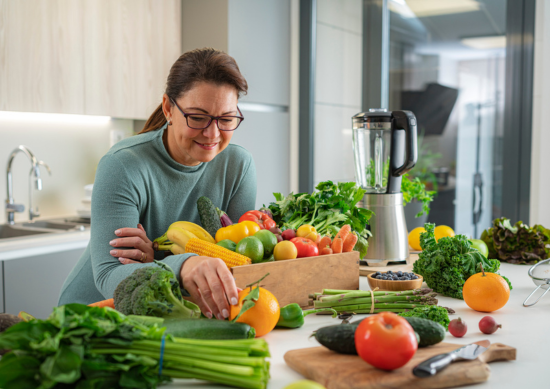
“Clean eating” does not have one specific definition but is based on the belief that eating foods closest to their natural state, meaning less processed or fewer additives, will provide more health benefits.
It’s true that processed foods typically include higher levels of additional fat, sugar or salt, such as sausage, boxed skillet meals and other packaged goods. High intakes of saturated fat, added sugar and salt can increase the risk of disease. Therefore, eating these foods in moderation is best, focusing on diverse food options rather than only “clean foods.”
What are “clean foods”?
The term “clean foods” is often used as a marketing term to persuade you to eat a certain way and can imply other foods are not “clean” and are bad for you. In the media, “clean” diets may be promoted as limiting processed foods and snacks and are typically associated with plant-based, gluten-free, preservative-free and sugar-free labels. However, foods marketed as “clean” don’t make them healthier.
Clean eating can be restrictive and limit certain nutrient-dense foods with health benefits. Eliminating certain foods can impact how you view eating, causing intense cravings and food binges, which is why moderation is key. Focus on a diverse diet of fruits, vegetables, whole grains and lean protein sources rather than only “clean” food.
Pay attention to labels
Reading labels helps identify foods that may have more nutritional benefits. When comparing food options, checking for added sugars and sodium (salt) is an excellent place to start! The food label tells you the percentage of your Daily Value. The Daily Value is based on the US Dietary Guidelines for Americans, where 5% or less of a nutrient is considered “low”, and 20% or more of a nutrient is “high.” The label below shows the food is high in sodium at 37% of the Daily Value for one serving.

Diet and cancer
Current research from the American Institute for Cancer Research (AICR) and the World Cancer Research Fund (WCRF) supports eating a diet rich in whole grains, beans, fruits and vegetables. They also suggest limiting processed foods high in saturated fat, starches and sugar to promote the prevention of cancer and for those undergoing treatment. Both organizations recommend limiting red meats, processed meats and dairy products high in fat.
Take home message
Do you need to “eat clean” to prevent or treat cancer? No. But you can still make smarter choices at the grocery store to support diet patterns that reduce cancer risk.
Having an overall healthy diet with varied foods can help lower cancer risk. Remember, cancer prevention is a lifestyle package, where other factors such as obesity, smoking, high alcohol intake
and an inactive lifestyle can increase the risk. Below are the 2018 WCRF/AICR Cancer Prevention Recommendations:
- Have the majority of your diet include whole grains, fruits, vegetables and legumes
- Fiber: 30 grams/day from food sources
- Fruits and vegetables: 5 portions (3 oz. each) per day
- Limit consumption of processed foods such as fast food, baked goods, candy and convenience foods (try swapping out those chips for mixed nuts and switching white bread for wheat bread)
- Limit consumption of red and processed meat and include more plant-based proteins
- Limit red meat to 3 portions (4-6 oz.) per week
- 3 oz = size of the palm
- Plant proteins: beans, lentils, chickpeas, tofu
- Limit consumption of sugar-sweetened beverages and alcohol
